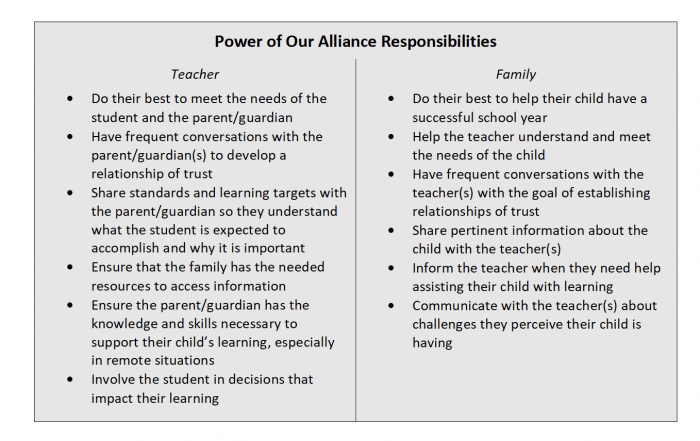By Jane Williams and Kattie Dewald
Recently a cartoon went viral that showed a teacher quietly standing alone on the beach, staring into the ocean. Rather than a tranquil beach scene, the sky was dark, and an ominous looking wave, with a crest churning many feet above the teacher’s head, was barreling toward her. Within moments, she would be swallowed up as the wave comes crashing ashore. The caption: School Year 2020-21.
If you’re an educator, how do you feel when you think about the 2020-21 school year? Is there a sense of excited anticipation, or does it feel like SY20-21 is a churning wave, full of uncertainties that are likely to toss you around?
There are a few unknowns every year, but this year the number is truly extraordinary. You may have hopes or preferences when it comes to delivering online, in-person, or hybrid models, but at the end of the day educators have very little control over their futures. Regardless of how the pandemic develops as we enter fall and winter, we know one thing will be true: teacher will be expected to teach, and students will be expected to learn.
However, if we truly want students to learn this year, we cannot rely solely on teachers. This year, more than ever before, the responsibility for student learning will fall largely on parents. Research shows us that there is a direct correlation between parent involvement and student achievement even in the best of times. In a challenging year like this one is sure to be, having an open, trusting, and supportive relationship with each student’s family is essential. It will become even more so when schools have to deliver instruction remotely, whether it’s for students who have opted out of in-person classes or for the entire student body.
The dramatic, unexpected changes that schools, students, and their families have experienced because of the coronavirus pandemic and the civil unrest occurring throughout our country has uncovered a problem: the traditional view of family engagement is antiquated. No longer is it enough to invite parents/guardians to attend special events, help with fund-raising, or hold activities like “Muffins for Mom”. Instead, what we’ll need is a real partnership between the school and students’ families. Teachers will need meaningful help from parents to maximize student engagement and learning, while parents and guardians will need help from the school as they assume more responsibility for their children’s learning.
The Power of Our Alliance
To maximize student learning in this unique school year, we propose a new model for family engagement: The Power of Our Alliance. Webster’s dictionary defines an alliance as “two or more people who join together for a common purpose.” Here, the Power of Our Alliance provides a structure for families and teachers to successfully work together for the benefit of the student.
This work begins with the teacher, parent/guardian, and student developing a mutually trusting relationship, where all stakeholders are on a level playing field. No longer does the teacher have the only voice in decision making; each member of the alliance has a voice, but with that voice comes responsibility:

Bringing the Power of Our Alliance to life
Step 1: Value relationships. The success of the Power of Our Alliance depends on building a personally connected and collaborative relationship between the parent/guardian, teacher, and student. Psychologist William Glasser theorized that there are six behaviors that destroy trusting relationships: criticizing, blaming, complaining, nagging, threatening, punishing, or bribing. Instead, schools can focus on supporting, encouraging, listening, accepting differences, trusting, respecting, and negotiating. Replacing unproductive behaviors with ones that build trust will go a long way toward making this school year successful.
Step 2: Meet basic needs. While this school year will certainly be tough on educators, it will also be extremely challenging for parents. To ensure it is successful for all stakeholders, it’s essential to make the Power of Our Alliance a “needs satisfying” partnership. The more a partnership can do to meet the basic human needs of everyone involved, the more successful it will be. Glasser taught that those basic needs are:
a. To be belong and be loved,
b. To know that we are important,
c. To have the freedom to make choices,
d. To have fun and be engaged, and
e. To know that we’re safe.
If the alliance operates in a way that allows each member to productively meet these five basic needs, it will thrive.
Step 3: Identify shared values. Take the time to determine who you want to be as you work together and how you will treat each other. The process of developing this agreement will provide each member with an opportunity to have input in creating a genuinely collaborative partnership.
Implementing a Power of Our Alliance wont’ be easy. It is time-consuming to work through this process with families of each of your students. But, in this time of unrest and uncertainty, it can be a true game-changer. Maybe, if we’re willing to invest the time, shifting from a status quo where individuals work in isolation to one where working as a team is the norm might be the silver-lining of this unprecedented school year.
Jane Williams is a co-founder of DRIVE. She has 50 years of experience in school improvement from the classroom to district administration with a passion for equity and inclusion. She followed her career in Stokes County Public Schools by leading a statewide substance abuse prevention network and continuing to lead school improvement initiatives.
As an Program Manager at Ed Direction, Kattie Dewald focuses on fostering instruction that is accessible to all students. She is a coach who understands the day-to-day demands on teachers and so she looks for ways to work side-by-side with them to implement proven strategies. A former elementary and middle school teacher, she is passionate about helping school leaders and teachers use data to make key decisions that impact students and teachers.

Start a Conversation
Thank you for your interest in Cicero Group. Please select from the options below to get in touch with us.
